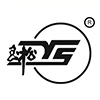Cold press is also called laminate pre-pressing machine. This series of machines is used to press furniture panels, wooden doors, various panels, etc. It can make the connection between boards stronger. Using advanced hydraulic lock and infrared control, the pressure is long-lasting and stable. The equipment is used to produce plywood, an important material in the construction industry for everything from furniture and cabinets to floors and roofs. It is made by stacking thin veneers of wood in a specific pattern. One of the key steps in plywood production is cold pressing, which bonds laminates and other materials together without the use of heat. It applies pressure to ensure a strong bond between layers.
What is a plywood cold press?
It is a specialized device that applies the necessary force and pressure to the stack of veneers, ensuring that the glue is evenly distributed and penetrates the wood fibers. The machine presses stacked veneers via hydraulic, pneumatic or mechanical systems according to the manufacturer's design and specifications.
Successful pressing of plywood in a cold press is followed by ensuring that the final product is free of gaps, bubbles, and other defects that could weaken the structural integrity of the board. Therefore, its efficiency, reliability and accuracy are crucial to the success of the plywood industry.

Working principle of plywood cold press
Cold presses are pressing machinery. The plywood cold press is mainly used to press the veneer to shape the veneer, and then put it into the hot press to perform a series of coordinated steps to ensure that the veneer stack is properly bonded.
The first step is to prepare the veneer, cutting it to the desired size, thickness and moisture content. They need to be consistent in all these aspects to ensure consistent bonding and avoid warping or cracking during pressing.
Then alternately stack the veneers so that the grain directions are perpendicular to each other. This creates a cross-grain pattern that makes the panel resistant to twisting, warping, and bending.
Next apply the glue to the surface of the veneer, making sure it covers the entire area and has the correct viscosity and consistency. The glue used may vary based on manufacturer preference, application and end use of the plywood.
The glue-coated stacked veneers are then loaded into a cold press. The machine then clamps the veneers securely in place with pressure plates and applies hydraulic, pneumatic or mechanical pressure to the stack.
The amount of pressure and duration applied depends on the curing time of the glue, the thickness of the veneer and the specifications of the desired final product. The operator presets these parameters, and the machine's computer controls adjust and monitor them during the pressing process.
After the pressing cycle is complete, the machine releases pressure and clamps and the operator unloads the stack of pressed veneers. Operators then inspect for defects, such as gaps, bubbles or unevenness, and if the veneer stack passes quality control testing, move on to the next production step.
Plywood cold presses are a key component in the plywood manufacturing process, ensuring that the veneers are properly bonded to produce high-quality and stable panels, which are vital to various industries. Using a hydraulic plywood cold press for plywood production is beneficial to improving product quality. It can reduce the auxiliary time during the hot pressing process, shorten the hot pressing cycle, and improve the productivity of the hot press machine.














